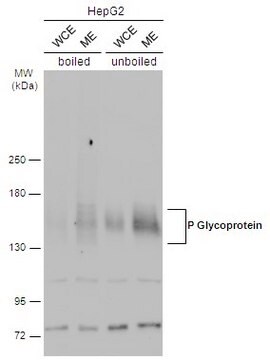MAB390-100UG
Anti-p75 LNGFR Antibody, Saporin conjugated, clone 192
clone 192, Chemicon®, from mouse
Sinonimo/i:
p75 Low Affinity Neurotrophin Receptor, NGFR
About This Item
Prodotti consigliati
Origine biologica
mouse
Livello qualitativo
Coniugato
saporin
Tipo di anticorpo
primary antibodies
Clone
192, monoclonal
Reattività contro le specie
rat
Non deve reagire con
mouse, human
Produttore/marchio commerciale
Chemicon®
tecniche
immunolesioning: suitable
Isotipo
IgG1
N° accesso NCBI
N° accesso UniProt
Condizioni di spedizione
dry ice
modifica post-traduzionali bersaglio
unmodified
Informazioni sul gene
human ... NGFR(4804)
Specificità
Applicazioni
Neuroscience
Neurodegenerative Diseases
Neurochemistry & Neurotrophins
Stato fisico
Stoccaggio e stabilità
Altre note
Note legali
Esclusione di responsabilità
Non trovi il prodotto giusto?
Prova il nostro Motore di ricerca dei prodotti.
Certificati d'analisi (COA)
Cerca il Certificati d'analisi (COA) digitando il numero di lotto/batch corrispondente. I numeri di lotto o di batch sono stampati sull'etichetta dei prodotti dopo la parola ‘Lotto’ o ‘Batch’.
Possiedi già questo prodotto?
I documenti relativi ai prodotti acquistati recentemente sono disponibili nell’Archivio dei documenti.
Il team dei nostri ricercatori vanta grande esperienza in tutte le aree della ricerca quali Life Science, scienza dei materiali, sintesi chimica, cromatografia, discipline analitiche, ecc..
Contatta l'Assistenza Tecnica.